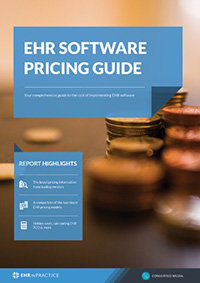How EHR can transform your administrative processes
Healthcare technology offers the potential for healthcare organizations and providers to improve their administrative operations. Even though an EHR’s main function rests in collecting and managing clinical data, an organization’s administrative processes can realize meaningful gains on several metrics when an EHR is incorporated into administrative operations.
The administrative processes of a health practice do not exist on an island independent of clinical operations, rather both functions require some level of coordination. When considering the goal of coordinating these two areas of an organization, the administrative arm of an organization can benefit greatly from accessing the clinical information collected and managed by an EHR. In sum, the key to improving a practice’s administrative processes hinges on improving information flows within an organization and using this free exchange of information to improve decisions making.
When looking at the ways an EHR can transform your administrative processes these improvements a driven by two the removal of data silos and incorporating clinical data into an organization’s administrative processes. When clinical data from an EHR can be used to better carry out administrative functions practices can better position themselves for success.
Removing silos between clinical and administrative data
Silos within an organization present two primary problems. The first relates to the sharing of mission-critical information across settings. If silos exist within an organization there is a high probability that not only information but a high probability that quality information is not being shared across settings. Therefore, a condition is created in which a single organization such as the hospital in question here functions more like multiple organizations that loosely coordinate to fulfill a broad mission.
When a department’s information is contained within data silos interdepartmental decision making becomes difficult. When integrated with administrative software patient records are always available simultaneously to all appropriate staff, meaning your staff can more efficiently locate and process patient information.
Enhanced practice management
Effective practice management involves using nonclinical data but also using clinical data to make an informed decision in several areas. For example, by using clinical data a practice administrator can examine how their organization is performing on several financial and non-financial metrics such as better compliance with Physician Quality Reporting Initiative (PQRI), more accurate billing and reduction in lost charges and denials associated with late filing
The most effective way to leverage clinical data from an EHR for use in administrative processes is by using an integrated practice management system that can tap into clinical data and use this information to better manage the scheduling and the flow of patients through a practice. Further by tapping into clinical data administrators can ensure that billing processes are carried out more effectively using automated coding and claims management systems to make certain billing is more accurate and can get the most from reimbursement rates.
Given the benefits of integrating EHRs with administrative software, it is important to view an organization’s administrative and clinical sides as complementing each other in how they operate particularly in the areas of improving operations and decision-making.







